How Do Termite Bait Stations Work
Termites love wood, especially dead wood. That’s why these pesky insects chew on termite bait stations. And your building has plenty of dead wood for its structure. If you own a property, you can’t ignore them for too long. These creepy crawly insects do horrific damage.
So, how can you rid your house of these pests, and do termite bait stations work?
In this article, we’ll cover:
- Why use a termite trap?
- Choosing a termite management system.
- What are termite bait stations?
- What about termite poison and dogs?
- What are the benefits of managing bait stations versus a chemical treatment?
- Do termite bait systems work?

Why use a termite trap?
Sometimes called white ants, termites restore tropical rainforests by recycling wood. These social insects eat almost any type of vegetation and return the nutrients to the soil. There are 276 known species of termites in Australia. Only a few cohabit with humans.
Termites then, serve a great ecological role. So, we don’t want to eradicate every termite, just the ones who munch on our homes and other buildings. And one of the two ways we can do this is by managing termite traps around our properties.

Choosing a termite management system
In Queensland, builders of new houses must establish a termite management system. The Building Codes Australia Act also advises homeowners to:
- Manage preventative methods for a subterranean termite attack.
- Choose deterrents based on specific site requirements and not price.
- Minimise the risk of termites through a concealed route.
- Be proactive in decision-making.
- Arrange regular inspections by licensed and qualified Timber Pest Inspectors.
- Be aware that termite bait stations help prevent but do not stop termites.
If you neglect a termite management system on your property, it could void warranties. As well, it could see the cancellation of your insurance entitlements.
Aside from termite bait stations, another way to shield your home is to use a chemical treatment barrier. A chemical treatment barrier is a liquid termicide. It is normally applied at the base of the external perimeter of your home (under concrete or in gardens).

What are termite bait stations?
A termite bait station is a specialised container that holds a bait. It attracts and kills termites. A property has many stations placed around it and are usually placed in the soil areas around the building.If there is already a sign of infestation, a technician may install an above ground bait station directly to the termite activity within the building.
Termite bait stations are a popular DIY method. But to be effective, you need to check them often for termite activity. And you still need to put in multiple traps, at least ten or more at regular intervals around the building.
The type of bait used also differs so as the termite bait cost. Some start with wood and no active ingredient or product that will affect the colony. When there’s a sign of termites, a licensed operator places the slow acting insect growth regulator inside. Others start with a mix of cellulose and active ingredient.
To entice termites to feed upon a slow-acting insecticide, termite bait stations use:
- Paper.
- Cardboard.
- Leaves.
- Wood.

What are the benefits of managing bait stations versus a chemical treatment?
An effective termite bait system usually needs ten or more stations. One of the main benefits is that you can more accurately gauge the success of killing the termite colony. With many stations, you have a higher chance of finding the insects before they reach your house.
If you put bait into a termite station, and you view it often enough, you can see live termites inside the station. As the bait vanishes, you know that those wood-munching insects are consuming the bait.
Then, as time goes by, you see the physical effects on the termites. You start to notice how it affects workers and soldiers in the bait stations. It can take a little longer than alternative chemical options before this happens but it’s incredibly effective.
Seeing those dead termites, you can be confident you’re eliminating the entire colony. By consuming the bait, the workers take it back to their nest. There they pass it onto other workers, soldiers, the king, the queen and the larvae.
A termite nest can have hundreds of thousands of termites, possibly millions in a colony. So, the goal with a termite bait station is to eradicate the entire nest.
A chemical treatment sprayed around your house might kill off 100,000 termites or more. Sometimes called a liquid barrier, it kills termites as they try to enter or leave your building. Some chemical treatments repel insects, which means they can simply look for ways around the barrier rather than actually being affected by it.
Termites can also move around or over chemical treatment by building mud tubes. And the one thing a chemical treatment doesn’t tend to do is eliminate the entire nest. This means termites can continue to attack and damage your building if adequate termite protection has not been implemented.
Chemical treatments last longer than bait stations. You should have your bait stations monitored and maintained at least every 3 months, or more frequently when there are termites about. But even treatments need vigilant checks to look for signs of termite incursions.

What about termite poison and dogs?
We often get asked about termite bait stations and dogs. Termite baits are safe around pets and children. The active ingredient in the bait station only works on the termites. The termite bait acts as an insect growth regulator, which targets the termites’ ability to regrow their exoskeleton.
And the stations are kid-safe too.
Another benefit of using a bait system is that it isn’t a liquid chemical. So, it’s safe to use and be around. As termite bait systems are non-toxic, it’s even better for the environment.
Nowadays, liquid chemical treatments are also quite safe. But, the safest method for the environment, is having no chemicals leaching into the soil.

Do termite bait systems work?
By using a termite bait system, you can trust that you are getting to the heart of the problem. You want to eliminate the entire colony.
The most effective termite management system uses a combination of:
- Termite bait stations.
- Chemical treatment.
- Physical barriers, like chemically impregnated sheet materials that are installed during construction/renovation of the building.
- Regular inspections by a licensed and qualified operator.
No termite protection system can guarantee you won’t get termites. That’s why it’s important to always be on the lookout. Licensed pest specialists know what signs to look for when it comes to termites. Termite baiting stations are one of the ways to find activity and then eradicate the entire nest.

Ask a licensed pest control company for a quote
Ask Suburban Pest to install your termite baiting system. We monitor your bait stations at least every 12 weeks, or more often in high risk situations. Our experienced operators know what hidden signs to look for when it comes to a termite attack.
Regular inspections reduce the risk of a termite invasion. Catch the signs of a termite incursion early. We also recommend ways to reduce the risk of termites from damaging your building.




